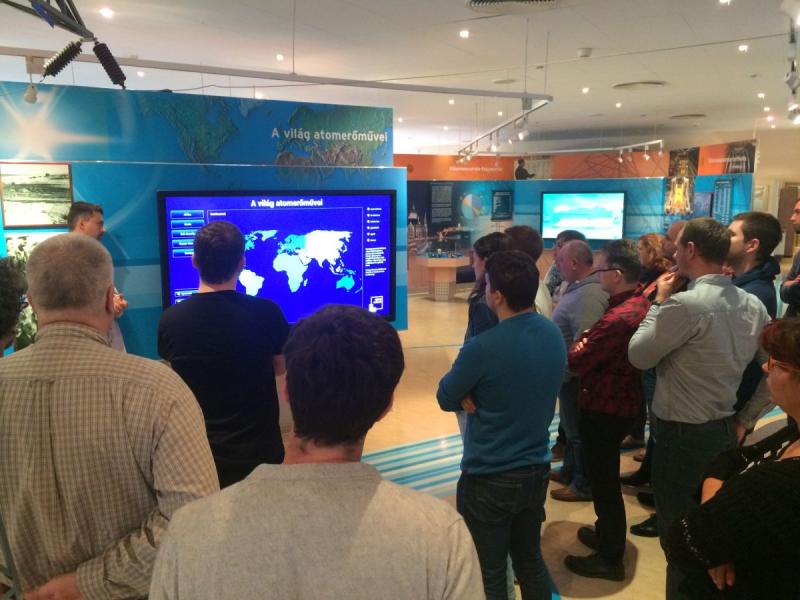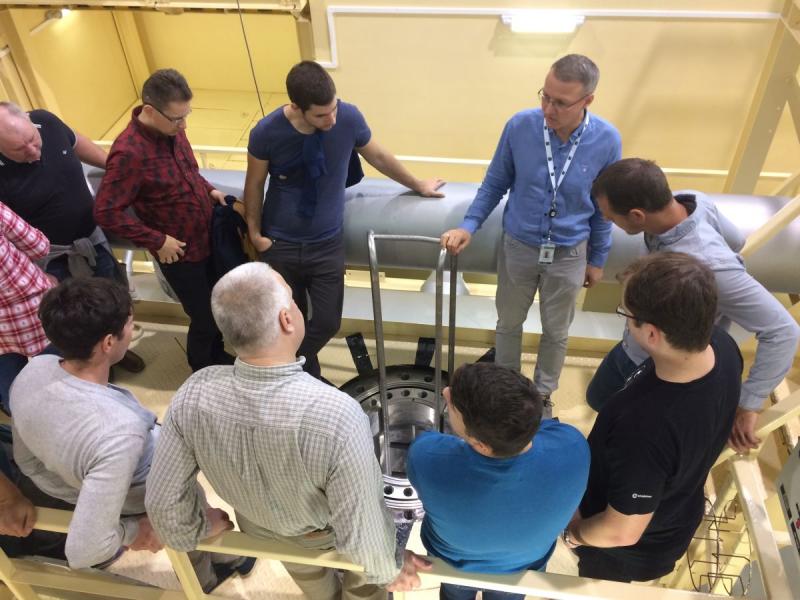2017. October 19.
The fall semester of 2017 is the second semester of the Nuclear Structures Engineering Specialized Training postgraduate program. A field visit to the Paks Nuclear Power Plant (NPP) is an essential part of the practical training.
Report of Dr. Tamás Lovas
The program started at the Information and Visitors Centre (IVC), where we learned about the share of the nuclear power plant in the domestic energy sector and the risks and regulations with the help of an accredited guide. In most cases, the tour implies an introduction to the basic principles of the operation of the nuclear power plant, but this time it was not necessary, because the students had already accomplished a course on basic nuclear technology in the spring semester.


After the IVC, we visited the operational area of the plant, where we couldn’t bring in any objects, except our ID cards. Following a thorough access protocol, we started the field visit at the glazed visiting corridor of the control room of Reactor Unit 4, where the guide told us about how many people operate the power plant, what tasks the operation requires, and we could look at the actual figures shown by the signals, displays and lights of the control panel of the working reactor. The next stage was the turbine hall, where we received the compulsory earplugs on entering the facility. This 510-meter-long hall is where the units of the secondary circuit are located, among them the (eight) turbines which transform the energy of steam into rotary motion and thus actuate the electricity power generators. Monstrous sizes, intense noise, and at the same time extraordinary cleanliness and order was what we experienced. From the turbine hall we got up to a purpose-built glass corridor 33 meters above ground-level, where we had an impressive view on the reactor hall of Reactor Unit 3 and 4. From this plan-view perspective we could see the actual arrangement of the components of the reactor.
At the end of field visit, we got to the northern entrance of the NPP by car, from where we could walk to the Maintenance and Training Centre (MTC). The MTC is unique worldwide so it hosts trainings for nuclear professionals from several distant countries, as it is constructed from real (never operated) reactor elements, which enables to simulate many aspects of the operation and maintenance of power plants while working with instruments of real size, material and construction, and it serves as a place to practice reactor maintenance procedures in an inactive setting.


The visit was very insightful, and it does not only reflect the attitude of the students. It has to be emphasized that both during our visit to the IVC and the MTC we were accompanied by qualified guides, who were real professionals and answered all the emerging questions while engaging our attention with highly intriguing information.
It is always exciting to visit such monumental structures this closely, to be able to go inside, climb up and touch details. In case of the Paks NPP, the gigantic machinery and instruments are both fascinating and evoke respect. We know the background principles of its operation but actually experiencing how such a complex system works, how it covers a good third of the electricity supply of Hungary while we are on site, and getting acquainted with its brilliant engineering solutions is an extraordinary experience.
We are especially thankful for supporting the organization of this field visit to Tamás Laki, who is an employee of the MVM Paks Nuclear Power Plant Ltd and a student of our MSc program.
The English language study programs available in the Faculty of Civil Engineering are all interesting and practice-oriented, such as this one. Kindly visit the Education menu of our website for further information.

